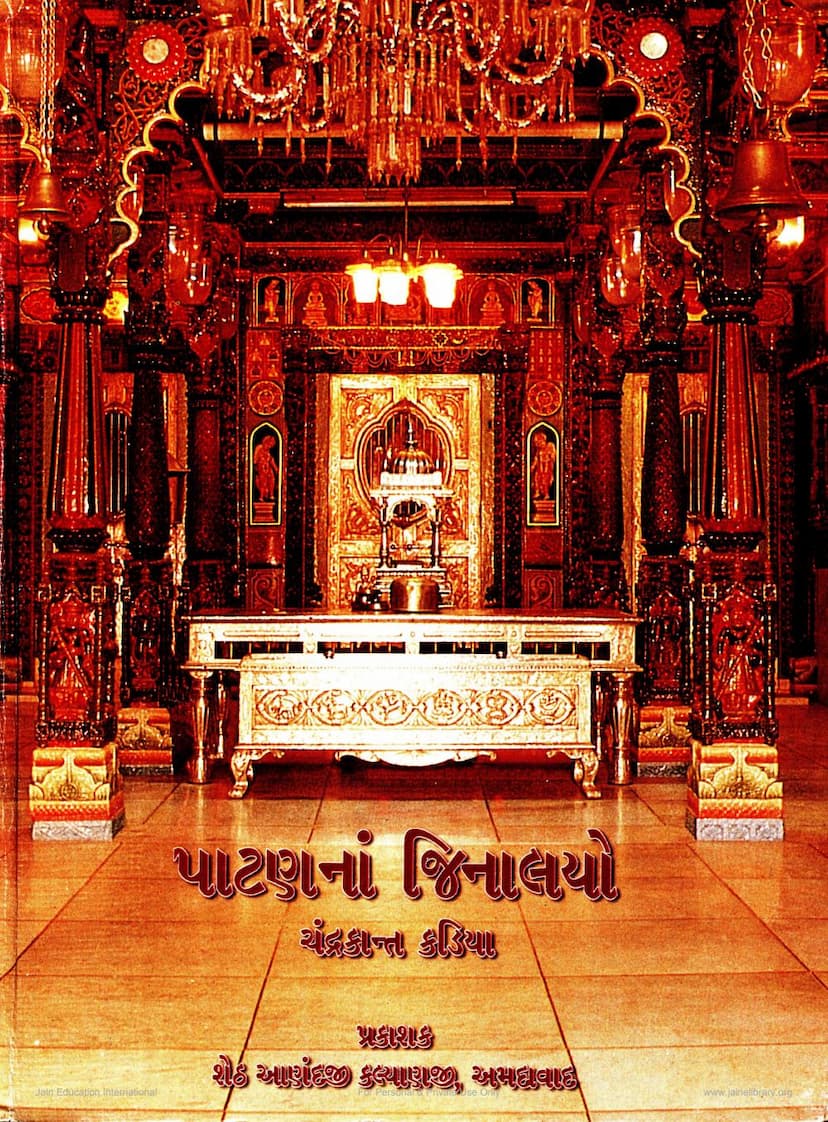Patanna Jinalayo
Added to library: September 2, 2025

Summary
Here is a comprehensive summary of the Jain text "Patanna Jinalayo" by Chandrakant Kadia, based on the provided text:
Book Title: Patanna Jinalayo (Temples of Patan) Author: Chandrakant Kadia Publisher: Anandji Kalyanji Pedhi, Ahmedabad Publication Date: June 20, 2000 (First Edition) Purpose: To document the history and significance of Jain temples (Jinalay) in the ancient city of Patan, Gujarat.
Overview:
"Patanna Jinalayo" is a meticulously researched and comprehensive work that delves into the rich Jain heritage of Patan, a city historically known as the capital of Gujarat. The book aims to preserve and present the historical, architectural, and cultural significance of the Jain temples (Jinalay) that have been established in Patan over centuries. It acknowledges the previous publication "Jain Tirtha Sarva Sangrah" and aims to provide a more focused and updated account of Patan's Jain temples, presented in a more accessible, multi-volume format.
Key Themes and Content:
-
Historical Context of Jainism in Patan:
- Patan holds a special place in Jain history, having been founded in auspicious circumstances guided by Jain Acharyas.
- Key Solanki rulers like Vanraj Chavda, Siddharaj, and Kumarpal were patrons of Jainism, contributing significantly to its flourishing in the region.
- Jain ministers played a crucial role in administration, demonstrating a unique blend of political acumen and adherence to Jain principles.
- Patan was a hub for the creation, transcription, and preservation of Jain scriptures and knowledge, with numerous influential Acharyas gracing the city.
-
The Project of Documenting Jain Temples:
- The book is part of a larger initiative by Anandji Kalyanji Pedhi to document Jain temples across India, recognizing the need to update and provide more detailed information due to renovations, idol relocations, and new constructions.
- This project is divided into ten volumes, focusing on major cities and towns in Gujarat. "Patanna Jinalayo" is the third publication in this series, following "Rajkotna Jinalayo" and "Khambhatna Jinalayo."
- The aim is to make this information accessible to locals and future generations, fostering pride and understanding of their heritage.
-
Detailed Description of Patan's Jinalay:
- The book provides a detailed historical account of Jainism in Patan, highlighting the golden age between the 10th and 12th centuries, particularly during King Kumarpal's reign and the influence of Acharya Hemchandrasuri.
- Each Jinalaya is described individually, covering its name, founders, architectural features, number and significance of idols (Pratimaji), and details about ancient inscriptions and other writings found within.
- Special attention is given to the preservation of historical manuscripts, divine and spiritual figures' statues, artistic creations, and wooden carvings. Photographs are included to visually represent the grandeur of Patan's past.
-
Chronological and Categorical Information:
- The book includes tables of Jinalayas, providing information in a structured format.
- It lists temples chronologically (Samvat) and by Tirthankar, aiding in historical understanding.
- The appendices contain valuable information, including a chronology of Jain events in Patan, several important "Chaitya Paripathis" (descriptions of temples and their layouts from different eras), and lists of various Jain institutions.
-
Specific Examples and Architectural Highlights:
- The book details numerous Jinalayas, often providing historical anecdotes and inscriptions. For instance, the Panchasar Parshvanath Jain temple, with its impressive Gurjar art and architecture, is described in detail, including its historical significance dating back to the time of King Vanraj Chavda.
- Architectural elements like "bhongati" (basements), "zarukhas" (ornamental windows), intricate wood carvings in domes and pillars, and the use of marble are highlighted.
- The book mentions the tradition of depicting pilgrimage sites like Sametshikhar and Ashtapad on wooden panels.
- It notes the presence of house temples ("gharderāsar") and their artistic craftsmanship.
-
Research Methodology and Collaboration:
- The author, Chandrakant Kadia, expresses gratitude for the extensive research and effort involved in collecting authentic information.
- The project benefited from the support of various organizations, including Shvetamber Murtipujak Jain Boarding, Sambodhi Sansthan, and Tirthkosh Nidhi for financial assistance and photographic documentation.
- A team of dedicated women played a crucial role in data collection by visiting temples and gathering information.
-
Challenges and Future Outlook:
- The book acknowledges the impact of time and changing demographics, noting the migration of Jain families and the challenges in maintaining the upkeep of some Jinalayas, often relying on salaried caretakers.
- The text expresses hope for the preservation of Patan's rich Jain tradition and the continued efforts to maintain its sanctity against adverse effects of time.
- A humble request is made for readers to point out any inaccuracies or provide additional information for future editions.
In essence, "Patanna Jinalayo" is a scholarly endeavor that serves as a vital resource for understanding the historical depth, architectural beauty, and spiritual significance of Jainism in Patan, offering a valuable contribution to the study of Jain heritage in India.